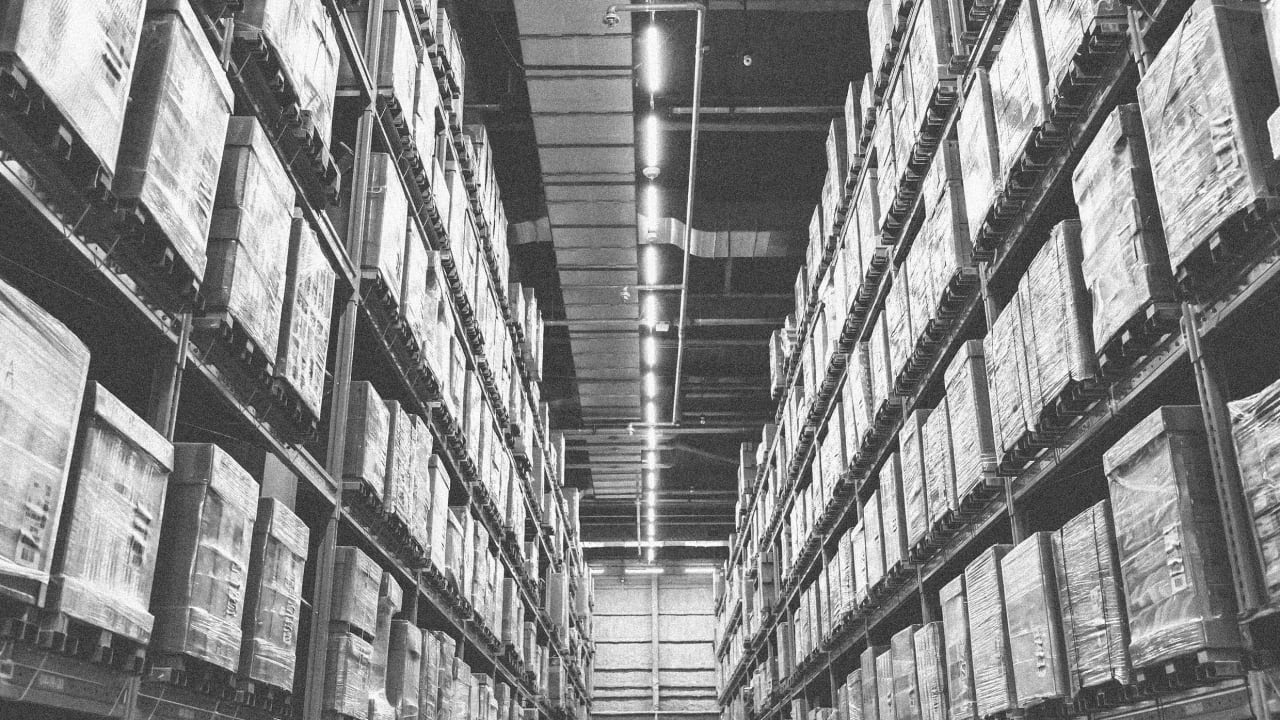To survive Trump’s tariffs, small businesses need a Marshall Plan
As President Donald Trump’s tariff policies and the global trade war began to dominate headlines, early attention focused on the impact on consumers, investors, and major companies like Apple and Ford. Since then, the spotlight has also turned to Main Street, where small and midsize businesses—including manufacturers and industrial suppliers—are increasingly feeling the strain. Analyses from the Institute for Supply Management and other industry sources confirm that costly fractures are now spreading across America’s supply chains, threatening the nation’s manufacturing revival. Small and midsize businesses—responsible for half of U.S. industrial production and three-quarters of the jobs in supply chain industries—are bearing the brunt of rising costs and ongoing economic uncertainty. These firms are central to America’s industrial future, yet little has been done to help them adapt, let alone boom, as President Trump promised during his campaign.As an example, in March The Wall Street Journal featured Tormach, a small Wisconsin-based machine-tool manufacturer, in a story on tariffs. In 2024, the firm relocated production to Mexico after learning about then-President-elect Trump’s planned tariffs on Chinese goods, only later to be hit by tariffs targeting Mexico. “We can’t just move factories overnight,” said CEO Daniel Rogge, reflecting the reality for many smaller manufacturers: Sweeping policy changes impose added costs and uncertainty they are not equipped to absorb. Mounting pressure This dynamic is playing out across the country, even if its effects are mixed (some types of firms can benefit). As tariffs upend global supply chains, small manufacturers in the U.S. are under mounting pressure—now with fears of recession, business failure, and job losses—just as their contributions are becoming more critical. Significant tariff increases and renegotiated trade deals are part of the Trump administration’s announced strategy to expand a “production economy” in America. But without greater predictability and solutions to help our suppliers adapt, the new protectionism threatens to derail a manufacturing revival already underway—one driven by geopolitics and catalytic national investments. Since 2021, the federal government has earmarked trillions of dollars to upgrade U.S. infrastructure, revitalize domestic manufacturing, and strengthen supply chains. These public investments underpin a modern industrial policy projected, by J.P. Morgan Private Bank in 2023, to catalyze $1 trillion in private investment over the next decade and encourage global companies to reshore operations. Small and midsize businesses are at the heart of this reindustrialization, as demand surges for the critical goods and services they supply. A strategic tool As trade policy experts and economic analysts have noted in recent months, tariffs can be a strategic tool when used selectively alongside other industrial policies—sheltering local firms, or at least buying them time to become more competitive, by making imported products from foreign competitors more expensive. Former President Joe Biden’s targeted tariffs on Chinese electric vehicles and solar technology, for instance, were designed to align with public investment and regulation in his administration’s clean energy agenda. However, blanket tariffs against established trading partners challenge U.S. businesses in established global supplier networks, a central feature of integrated trade and distributed production. Manufacturers relying on cross-border supply chains report rising input prices and declining orders, which compound as components enter and leave U.S.-based factories. Further, the Trump administration’s approach has fueled widespread confusion, driving record-high small business uncertainty and declining optimism and investment, according to surveys by the National Federation of Independent Business. High stakes For small and midsize manufacturers in the U.S., the stakes are existential. One important reason is that these firms continue to face structural barriers that stifle their performance. Research from the McKinsey Global Institute shows that small businesses in U.S. manufacturing are less productive than their larger peers and international counterparts, thanks to challenges in accessing financing, skilled labor, technologies, and new markets. Tariffs, without adaptive support, threaten to deepen this divide. Historically, the U.S. has responded to disruptive trade transitions with adjustment programs designed to support domestic firms and workers. In particular, Trade Adjustment Assistance for Firms (TAAF) was created in 1962 to help companies adapt to rising imports and global competition. But this program and others like it have proven too limited in scope and largely out of step with modern economic demands. Moreover, the Trump administration’s move to cut, and then restore, funding for proven small manufacturer pro

As President Donald Trump’s tariff policies and the global trade war began to dominate headlines, early attention focused on the impact on consumers, investors, and major companies like Apple and Ford. Since then, the spotlight has also turned to Main Street, where small and midsize businesses—including manufacturers and industrial suppliers—are increasingly feeling the strain.
Analyses from the Institute for Supply Management and other industry sources confirm that costly fractures are now spreading across America’s supply chains, threatening the nation’s manufacturing revival. Small and midsize businesses—responsible for half of U.S. industrial production and three-quarters of the jobs in supply chain industries—are bearing the brunt of rising costs and ongoing economic uncertainty. These firms are central to America’s industrial future, yet little has been done to help them adapt, let alone boom, as President Trump promised during his campaign.
As an example, in March The Wall Street Journal featured Tormach, a small Wisconsin-based machine-tool manufacturer, in a story on tariffs. In 2024, the firm relocated production to Mexico after learning about then-President-elect Trump’s planned tariffs on Chinese goods, only later to be hit by tariffs targeting Mexico. “We can’t just move factories overnight,” said CEO Daniel Rogge, reflecting the reality for many smaller manufacturers: Sweeping policy changes impose added costs and uncertainty they are not equipped to absorb.
Mounting pressure
This dynamic is playing out across the country, even if its effects are mixed (some types of firms can benefit). As tariffs upend global supply chains, small manufacturers in the U.S. are under mounting pressure—now with fears of recession, business failure, and job losses—just as their contributions are becoming more critical.
Significant tariff increases and renegotiated trade deals are part of the Trump administration’s announced strategy to expand a “production economy” in America. But without greater predictability and solutions to help our suppliers adapt, the new protectionism threatens to derail a manufacturing revival already underway—one driven by geopolitics and catalytic national investments.
Since 2021, the federal government has earmarked trillions of dollars to upgrade U.S. infrastructure, revitalize domestic manufacturing, and strengthen supply chains. These public investments underpin a modern industrial policy projected, by J.P. Morgan Private Bank in 2023, to catalyze $1 trillion in private investment over the next decade and encourage global companies to reshore operations. Small and midsize businesses are at the heart of this reindustrialization, as demand surges for the critical goods and services they supply.
A strategic tool
As trade policy experts and economic analysts have noted in recent months, tariffs can be a strategic tool when used selectively alongside other industrial policies—sheltering local firms, or at least buying them time to become more competitive, by making imported products from foreign competitors more expensive. Former President Joe Biden’s targeted tariffs on Chinese electric vehicles and solar technology, for instance, were designed to align with public investment and regulation in his administration’s clean energy agenda.
However, blanket tariffs against established trading partners challenge U.S. businesses in established global supplier networks, a central feature of integrated trade and distributed production. Manufacturers relying on cross-border supply chains report rising input prices and declining orders, which compound as components enter and leave U.S.-based factories. Further, the Trump administration’s approach has fueled widespread confusion, driving record-high small business uncertainty and declining optimism and investment, according to surveys by the National Federation of Independent Business.
High stakes
For small and midsize manufacturers in the U.S., the stakes are existential. One important reason is that these firms continue to face structural barriers that stifle their performance. Research from the McKinsey Global Institute shows that small businesses in U.S. manufacturing are less productive than their larger peers and international counterparts, thanks to challenges in accessing financing, skilled labor, technologies, and new markets. Tariffs, without adaptive support, threaten to deepen this divide.
Historically, the U.S. has responded to disruptive trade transitions with adjustment programs designed to support domestic firms and workers. In particular, Trade Adjustment Assistance for Firms (TAAF) was created in 1962 to help companies adapt to rising imports and global competition. But this program and others like it have proven too limited in scope and largely out of step with modern economic demands.
Moreover, the Trump administration’s move to cut, and then restore, funding for proven small manufacturer programs, such as the Manufacturing Extension Partnership led by the National Institute of Standards and Technology, along with court-contested funding freezes on infrastructure and other federal investments, further complicates efforts to rebuild America’s industrial base.
A Marshall Plan
As the Trump administration advances a sweeping protectionist agenda and other nations and trading blocs respond, the United States needs a modern trade adjustment strategy that matches the scale of our reindustrialization and the realities of shifting geopolitics. Following the November election, we called for a Marshall Plan for Small Business—a strategic framework designed to build the base of small and midsized firms and talent needed to drive America’s new industrial economy.
The plan has three mutually reinforcing pillars, each validated by working examples in diverse regions of the country: 1) equip small businesses with the tools, services, and advisory support to navigate shifting markets, adopt modern technologies, and scale operations; 2) launch a small-business-centered workforce development model capable of training and mobilizing skilled workers across high-demand occupations; and 3) expand access to flexible financing tailored to the unique needs of small businesses and especially suppliers, supporting investments in research and development, equipment, workforce, and strategic growth opportunities such as mergers and acquisitions.
Since his first term, President Trump has promised a manufacturing revival. Delivering on that demands a forward-looking agenda that gives small and midsize manufacturers and their workers—the backbone of America’s productive capacity—the tools, talent, and capital they need to survive and grow. This was important unfinished business before the U.S. launched a trade war. Now it’s an imperative.
































































































































































